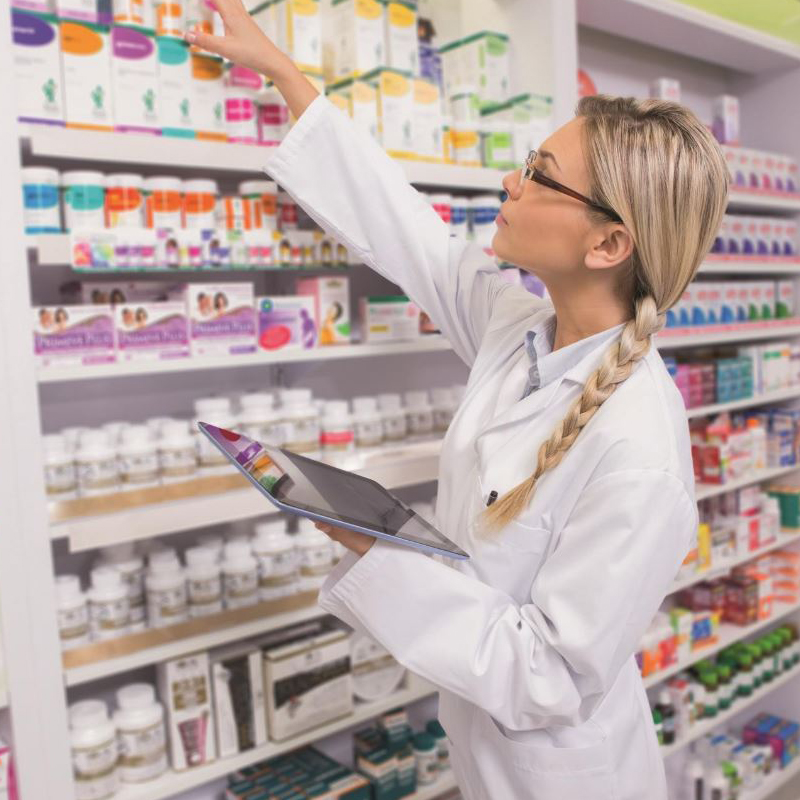Thanks to the COVID-19 pandemic, both the food and pharmaceutical sectors have been on the front lines. From crushing demand during the initial months and even counterfeit issues, the pandemic has shone a light on two of the most crucial industries in the world.
Post-pandemic, it's hard to believe that we will ever go back to the old ways of doing business in those two critical industries. Accurate and efficient coding and marking has played a massive role in ensuring that vital products can get to market and into the hands of consumers quickly, and safely.
Coding & Marking to Food & Pharma - A Perfect Match
During a recent webinar hosted by HP, Adem Kulauzovic, Domino North America Director of Coding Automation, chatted with Pat McGrew, founder of the McGrew Group, about the critical role that coding and marking plays in supporting companies within both the Food and Pharmaceutical industries.
During the webinar, Kulauzovic and McGrew covered several key points about how coding and marking providers are helping manufacturers to protect their brands, and, by extension, the health and safety of their end consumers, by helping prevent counterfeit products from entering the marketplace.
When it comes to the Food and Pharmaceutical industries - such counterfeit prevention can have have grave consequences.
Protecting consumers with coding and marking
For companies with highly regulated goods, coding and marking technology in both primary and secondary packaging is crucial and ensures both consumer safety and brand protection. In other industries, it may simply be used for brand protection alone, in Industries such as Food, Pharma, Health and Beauty, consumer safety comes into the equation.
Ultimately, industries like this aren't just worried about trademarks and profit loss from unscrupulous copycats. Instead, they are also worried about the basic health and safety of their customer base.
This counterfeit issue isn't small issue.
Did you know?
- $140 million is invested in anti-counterfeiting and track and trace solutions for cosmetics.
- $26.4 million of counterfeit alcohol was seized by INTERPOL and Europol in 2017.
- 1 in 4 products in the pesticide and seeds market are illegal.
- $2.741 billion are invested in security Printing for ticketing and lotteries.
More than Trademarks
As you can see, companies have invested heavily in anti-counterfeit measures to protect both their brand and their consumers. Without coding and marking technology, they would not have one of their most powerful weapons against counterfeiting.
In order to stop counterfeiters and protect consumers, countries across the globe have introduced regulations and legislation designed to stop illegal, stolen, or counterfeit products from entering the supply chain in the first place.
In the pharmaceutical industry, this is also being done to prevent medication errors, enable better inventory controls, assist with product recalls, and avoid medication shortages caused by non-compliant products.
Despite this fact, a whopping 33% of pharmaceutical companies are not ready for serialization that is now required under FDA Drug Supply Chain Security Act

How can coding and marking companies help empower manufacturers meet regulatory requirements?
The key word here is consultation – solution providers and their customers need to put in the time and resources to understand how a regulation impacts their industry, and by extension, their business, and ultimately, what solution they need to comply with this new regulation. Finally, a good consultation will be able to inform your company on how best to implement this new solution.
As for product traceability, for example, just the word 'traceability' only goes so far to actually helping a company achieve their goals. This buzzword brings all kinds of other questions including: what kind of traceability is needed and how long does a product need to be tracked for?
Helping a company determine how long they need to track an item, indicates the type of data structure that is needed, and how durable the inks need to be to ensure that products can be sold to retailers and customer safely, meeting all required regulations.
How long does a code need to last?
This question is so crucial, and of course, like so many question in business - It depends. Truthfully, the answer varies depending on the industry.
Within the pharmaceutical industry, product codes are often required to last from four to six years. Why this length of time? Essentially, the required longevity of a code will ultimately vary depending on the product shelf life in addition to the basic reason the product is being tracked.
This includes counterfeit prevention, but also helps detect product diversion and grey market activities. Pharmaceutical products pass across multiple hands along the supply chain and need to be monitored throughout the entire product lifecycle to ensure consumer safety.

How do you decide on the correct coding technology?
This question is a tough one because there are many variables at play. Different substrates have different adhesion properties. As a result, they require different coding technologies to get the same durability.
Equally, manufacturing processes and storage requirements are a factor – a code may need to withstand heat as part of the manufacturing process, or, as with some COVID-19 vaccines, withstand being stored at very low temperatures.
Due to its impressive versatility and ability to work on a number of different substrates, thermal Inkjet is often the technology of choice, offering a wide range of inks to meet the various applications. The crucial factor in determining the best solution is in testing – of both inks, and substrates, and determining the durability in different environments.
How does track and trace technology enable companies to protect their brands?

While we've been talking more about the life and death examples of pharmaceutical and food industries, the coding and marking industry also plays an important role for industries where the consequences aren't quite as dire. For other industries, especially with luxury products, without a proper track and trace solution, value can severely damaged by counterfeit goods.
Counterfeit products, and diverted stock, can undermine brands, and devalue products - something that is truly serious for high end products. If your company distributes high-end beauty products via salons rather than traditional retailers, illegal products – whether counterfeit or diverted – entering the market at a fraction of the cost, will undermine the value of your original brand.
Track and trace technology is a wonderful solution and can be used to identify genuine product. In the case of diverted stock, the point in a supply chain when a product has entered the grey market. Crucially, the codes used for track and trace need to be both overt, and covert, so if a visible code is removed from a product, a hidden code can still be used.
What’s the next big thing in product traceability?
If we'd have to put our finger on the biggest advance in traceability, it's clearly Industry 4.0.
Industry 4.0 and its ability to store data in the cloud will make it easier to identify and discover more information about products. This creates benefits not only for brands, but also for end consumers.
In the future, it will be much easier for companies to include traceability data on their products, and for consumers to use this information to make informed purchasing decisions and connect with brand owners after a purchase is made.

Want to know more?
To find out more about the role that coding and marking has to play in fighting counterfeits, safeguarding consumers, and protecting brand reputation, please get in touch.